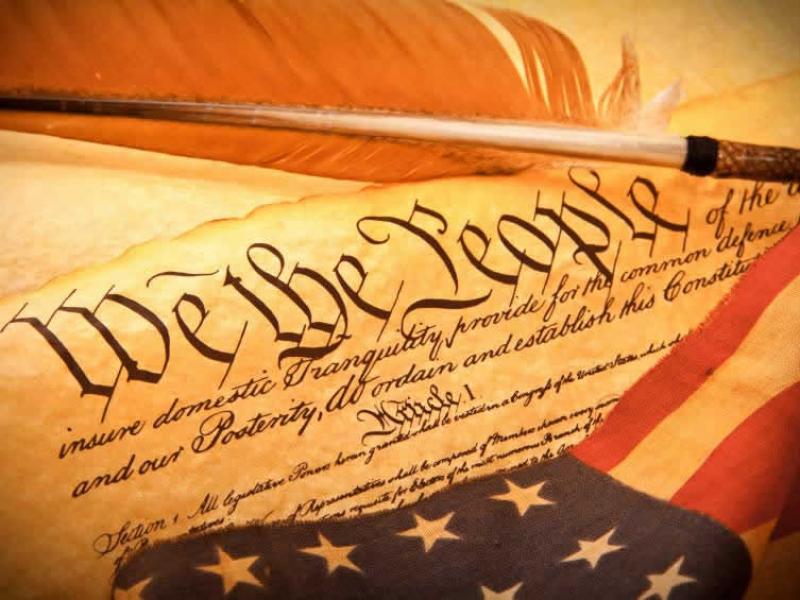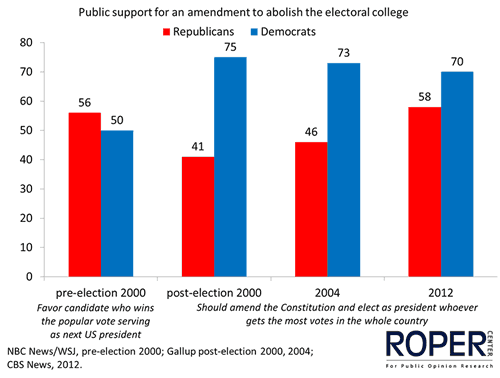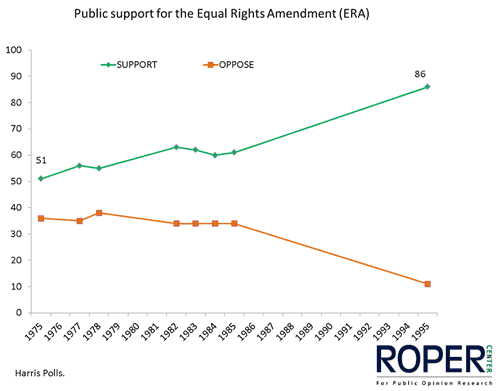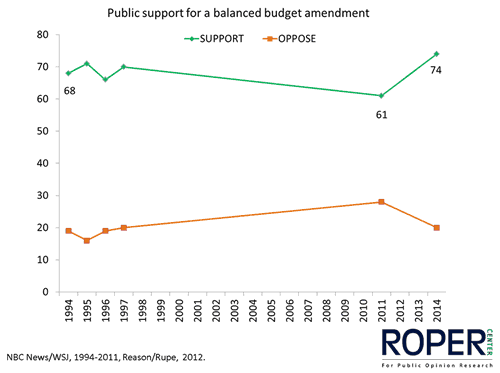Last week Senator Tom Udall sponsored a bill to amend the U.S. Constitution to allow Congress to place limits on campaign contributions and wrote in The Hill: “Amending the Constitution is difficult – as it should be – but it is long past time to have an honest and thoughtful national dialogue about our broken electoral process.” Politicians have often framed the amendment process as a procedure of last resort, necessary to ensure lasting change on a vital issue. But is the American public convinced by such arguments? What do “we, the people” think about calls to alter the country’s governing document?
From the Roper Center for Public Opinion Research archives:
An Enduring Document
In general, the public reject the idea that the Constitution requires significant updating. In a 2011 AP/National Constitution Center/GfK poll, three-quarters of Americans said the Constitution was “an enduring document that remains relevant today,” while only one-quarter said it needed modernization. Similarly, a 2011 Time/ABT/SRBI poll found 64% agreed that the Constitution has “held up well and is in little need of change.”
Making Constitutional Amendments – The One That Passed
Despite public aversion to major Constitutional revision, from the earliest polling the public has been willing to make modifications through the amendment process. In the 1930s, the public was asked to give their opinion of the amendment preventing a president from serving more than two terms. Such a measure was supported by less than half of the public until 1944, when Franklin D. Roosevelt won his fourth term. Just after that election, a National Opinion Research Center survey found 58% of the public in favor of what would become the 22nd Amendment. Post-ratification, public support for this amendment has not wavered, remaining over six in ten in Gallup polls.
Making Constitutional Amendments – The Popular Proposals
While the 22nd amendment passed with a slim public majority in favor, other proposed amendments have enjoyed robust, long-lasting support without achieving ratification, a testament to the political and structural complexities of the amendment process. Perhaps the most dramatic example is a proposal to replace the electoral college with direct popular vote. A majority of the American public has long supported this idea. Gallup surveys from the 1940s found over half of those who knew what the electoral college was thought it should not be continued. Since 1967, majorities in Gallup polls have supported an amendment abolishing the electoral college, with peak support at 80% in 1968.
Click graph
Polarization on this issue became significant after the events of the 2000 election. In October 2000, the New York Times reported that “officials in both campaigns said they were braced for the unlikely, but certainly possible, prospect that Mr. Gore could reach the White House by capturing the electoral college while Mr. Bush could prevail in the popular vote.” Enthusiasm for the popular vote at the time was moderate among Democrats, but skyrocketed after Gore won the popular vote while losing the electoral college. Party differences had lessened considerably by 2012.
Unlike other proposed amendments with majority public support, the Equal Rights Amendment actually passed both houses of Congress in 1972, only to fail to achieve ratification by the required number of states. Slim majorities supported the amendment during the ratification process, but support for the ERA grew over time.
Click graph
Since 1962, when the Supreme Court ruled in Engel v. Vitale that school-sponsored prayer is forbidden by the First Amendment, House members have repeatedly introduced bills to overturn this prohibition. Since 1974, every variant on a school prayer amendment question – from “allowing organized prayer” to “permitting prayers to be spoken” – has found over six in ten of the public in favor. Despite popular backing, the House has never passed such a bill with the required two-thirds majority.
In the 1970s, a number of fiscal conservatives, including CA Governor Jerry Brown, called for a balanced budget amendment. The first poll question on this topic by CBS News in 1978 and found that 78% of Americans supported such an amendment, and since then support for the amendment has stayed high. A 2011 NBC News/Wall Street Journal poll revealed some polarization: 52% of Democrats approved, versus 72% of Republicans.
Click graph
Making Constitutional Amendments – The Also-Rans
In comparison to those amendments that achieve long-term support, some proposals enjoy only a brief moment of popularity. In 1989 the Supreme Court ruled that flag-burning was a form of protected free speech. A Gallup poll taken just after this announcement found 71% of the country approved of a flag-burning amendment. But the most recent polls on this topic have shown considerably lower support – 56% in a 2006 Gallup poll, and even lower numbers in a series of polls from the First Amendment Center.
Despite the public’s overall belief in the Constitution as an enduring document, the data indicate that Americans are quite willing to use the amendment process to make policy changes. As for Senator Udall’s bill, a 2014 Reason-Rupe poll found 57% of the public approving such an amendment. But, as history shows, public support does not guarantee success.
Sources
- Roper Center for Public Opinion Research archives
- Collections cited include: AP/National Constitution Center/Gfk, Time/ABT/SRBI, Gallup, NBC/WSJ, CBS News, Harris, First Amendment Center, Reason/Rupe.



